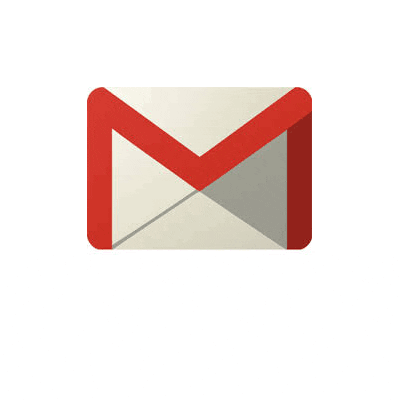Learn how to connect your chatbot to data sources and provide relevant and personalized responses.
Congratulations! Your business is growing by leaps and bounds and more and more customers are asking you for a demo or call.
Do you have a system implemented to monitor these new leads and get in touch with them, right?
No? Not even an automated response for each contact?

We know this is a cumbersome issue for any company that wants to grow exponentially. Databases, automations, CRMs, how long could it take to implement all of this? Would it be worth it?
Well, here we bring you a simpler and faster solution to manage this issue: chatbots that connect to your database and respond to your customers in a personalized way.
How are chatbots used for customer service?
Chatbots are an excellent tool for interacting with customers, providing them with instant attention, and providing useful responses to their queries. However, we won't lie to you, making them respond accurately can be a challenge.
This is mainly because they must access data sources that are not necessarily up-to-date, which can affect the quality and relevance of the responses they provide to users.
This is a problem faced by most companies, but it can be solved with the implementation of the right technology. The ideal is to have a chatbot that collects data, and uses it coherently in each of the interactions it can have with customers.
Select the data source for the chatbot
To integrate the chatbot into a data source, the first thing is to know well which one to use. There are different data sources that can help you create a chatbot that responds in a personalized way and can maintain a coherent dialogue with users, although all involve significant manual work to establish and maintain the connection.
Each has its own advantages and disadvantages, and its use may be more or less difficult for people who do not specialize in data science.
This work includes initial setup, writing code for integration, and maintenance tasks to ensure that the data is always up-to-date and accurate. We tell you what data sources you can use to achieve this.
Internal databases
One of the most common and valuable data sources for chatbots are internal databases. Within them, you can find everything from pre-designed responses for frequently asked questions to product information, customer details, and sales records, among others.
Thanks to them it is possible for the chatbot to use data to respond, although over time they may become outdated, and it is likely that timely responses will not be provided to user queries.
Integration with these internal databases requires deep knowledge in data science, as you must create SQL code to connect the user's query with MySQL, SQLite, or MongoDB databases.
APIs from external applications
Another alternative to make a chatbot use data to respond are the APIs of external applications. This can be very useful for solving user queries, although it also has some important limitations.
To respond accurately, it is essential to collect data, since only in this way can information be provided in a dynamic and updated way. The problem of using them, in specific cases like that of Chat GPT, is that the data is sent to the servers of Open AI, which may have some legal implications, depending on the company and the type of data it handles.
User database
Finally, we have the user database, which can be very useful when automating interactions, but which requires a lot of work. These databases usually include important data about each person, such as their interaction history, their preferences, the purchases they have made -in case it is an ecommerce-, and browsing behavior, among others.
In this data source, you must also pay close attention to the privacy and security of user data, to comply with some regulations such as the General Data Protection Regulation or GDPR.
In some cases, although it is not so common, integration with documents and files can also be carried out. This means that you can give data to your chatbot in PDF, in plain text or in an Excel document.
1. Integrate the chatbot with the data source
After selecting the data source, you can proceed to integrate it with the chatbot. This is a process that involves different steps, which can vary in complexity and require a certain degree of experience and knowledge in different areas.
2. Define the chatbot's requirements
The first thing to do is to define the chatbot's requirements, taking into consideration the functionalities it will have, the type of questions it must answer, and the data it must use for all its interactions.
For example, it could be configured to assist users in a purchase, provide real-time technical support, or make a budget. It all depends on the needs and expectations of each company.
It is important to emphasize that the quality and availability of data is determinant in the chatbot's ability to provide precise and useful responses.
3. Configure the development environment
In this step, the process becomes somewhat more technical, because some tools and libraries for programming and data management must be used. It is worth noting that for this you must have knowledge of programming languages such as Python, JavaScript, or Java.
If the chatbot needs to access specific data for its interactions, it is important to ensure that it has adequate access to this data during development and testing. This may involve setting up connections to internal databases, establishing access permissions to external APIs, or loading test data sets to simulate different use scenarios.
4. Design the conversation flows
Having programming skills is just one of the requirements you must meet to make a chatbot that uses data to respond to users. It is essential to have knowledge of logic that helps in designing the conversation flows, as the intentions and entities must be defined, and structured dialogues created that allow for adequate response to any query.
These flows with structured dialogues tend to be complex, because they require multiple steps and decisions. Generally, this part is handled by the UX writer, a specialist who not only analyzes the dynamics of the interaction between the user and the chatbot, but also takes care of writing the dialogues in a way that is intuitive, coherent, and attractive.
In this stage, it must be defined how the user's inputs should interact with the data sources. The key point of this part of the process is to design dialogues that are natural, coherent, and that guide the user to the desired result in a clear and efficient way.
5. Perform tests for the validation of the chatbot
Another stage over which you must have control to make a chatbot use data to respond is that of testing and validation. The idea is to evaluate if the chatbot accesses the data sources adequately and generates precise and relevant responses to user queries.
We are talking about usability tests with which the chatbot's ability to query the data source, collect user data, and make updates if necessary is measured.
This process not only takes time, but can also be costly, especially because it requires the participation of professionals from various areas and real users who test the chatbot in different scenarios, with the purpose of measuring its effectiveness.
Implement the chatbot and perform the corresponding integrations
If positive results are obtained in the testing and validation phase, you can move on to one of the last stages, implementation.
Moving to the production environment is something that can be done manually, although for this it is necessary to configure servers or cloud services to run the chatbot, establish security measures to protect user data, and perform integration with instant messaging applications, CRMs, or platforms from which interactions with the public will be managed.
In some cases, it is possible to use third-party platforms to simplify the process. However, most of these platforms have limitations in terms of training the chatbot, which makes their responses not the most appropriate.
It is crucial to have a platform that uses machine learning algorithms and natural language processing (NLP) for the training or training of the chatbot, as this improves the user experience, and offers personalized and useful responses to each query that is received.
Optimize your chatbot with Darwin AI's Smart Fields
With the smart fields of Darwin AI you not only avoid all the complications that come with setting up a chatbot from scratch, but you can also store structured data with relevant information so that interaction with your customers feels natural.
By integrating the smart fields in the conversation with customers, your chatbot becomes an AI EMPLOYEE that can offer highly personalized responses tailored to each conversation. It is a solution that allows you to store data such as the date of a test drive, the date of a property visit, or relevant information for the automated preparation of a budget.
In this way, your chatbot can be integrated as another employee of the company, and improve efficiency and customer experience.
.png)






















